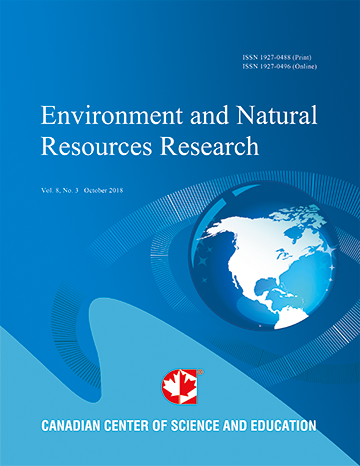Predict Metal Toxicity and Water Quality Criteria of Different Types of Water Into Taihu Lake, China Using Biotic Ligand Model
- Yuan Zhang
- Liwen Chen
- Jie Dai
- Tao Yu
Abstract
The Biotic Ligand Model (BLM) is an important tool in predicting acute toxicity of metal to aquatic organisms. This study used the BLM to predict acute toxicity (LC50, the lethal concentration for 50% of test organisms) of Cu and Zn to Daphnia magna, and to predict water quality criteria (WQC) for different types of water (river water, treated and untreated sewage, and rainwater) into Taihu Lake, an important drinking water source for millions of population. Their effects of metal toxicity on Taihu Lake were also explored. The results showed that Taihu Lake water had a relatively higher LC50 (Cu) value (1.38 ± 0.60 mg/L) than other types of water except for untreated sewage (2.25 ± 2.13 mg/L). Of these types of water, predicted LC50 value of Cu followed the order of untreated sewage > rainwater > Taihu Lake > river water > sewage effluent. In addition, acute toxicity of Zn followed the order of river water > rainwater > Taihu Lake > sewage effluent > untreated sewage. Comparison of the predicted WQC values with the Chinese National Water Quality Standard of Surface waters indicated that the existing standard for copper might over-protect the aquatic organisms in Taihu Lake. The correlation analysis showed that increased DOC (dissolved organic carbon) concentration resulted in a higher LC50 value due to complexation between metal and organic matters, which reduced Cu toxicity. A significant positive relationship existed between cation concentration and predicted LC50 value, also indicating that cation concentration may reduce metaltoxicity. The work provided basic data for the study of water effect ratio (WER) and for the establishment of China’s own water quality critieria based on Chinese water environmental conditions.
- Full Text:
 PDF
PDF
- DOI:10.5539/enrr.v4n1p10
Journal Metrics
Google-based Impact Factor (2016): 6.22
h-index (November 2017): 12
i10-index (November 2017): 19
h5-index (November 2017): 11
h5-median (November 2017): 12
Index
Contact
- Emily LinEditorial Assistant
- enrr@ccsenet.org
